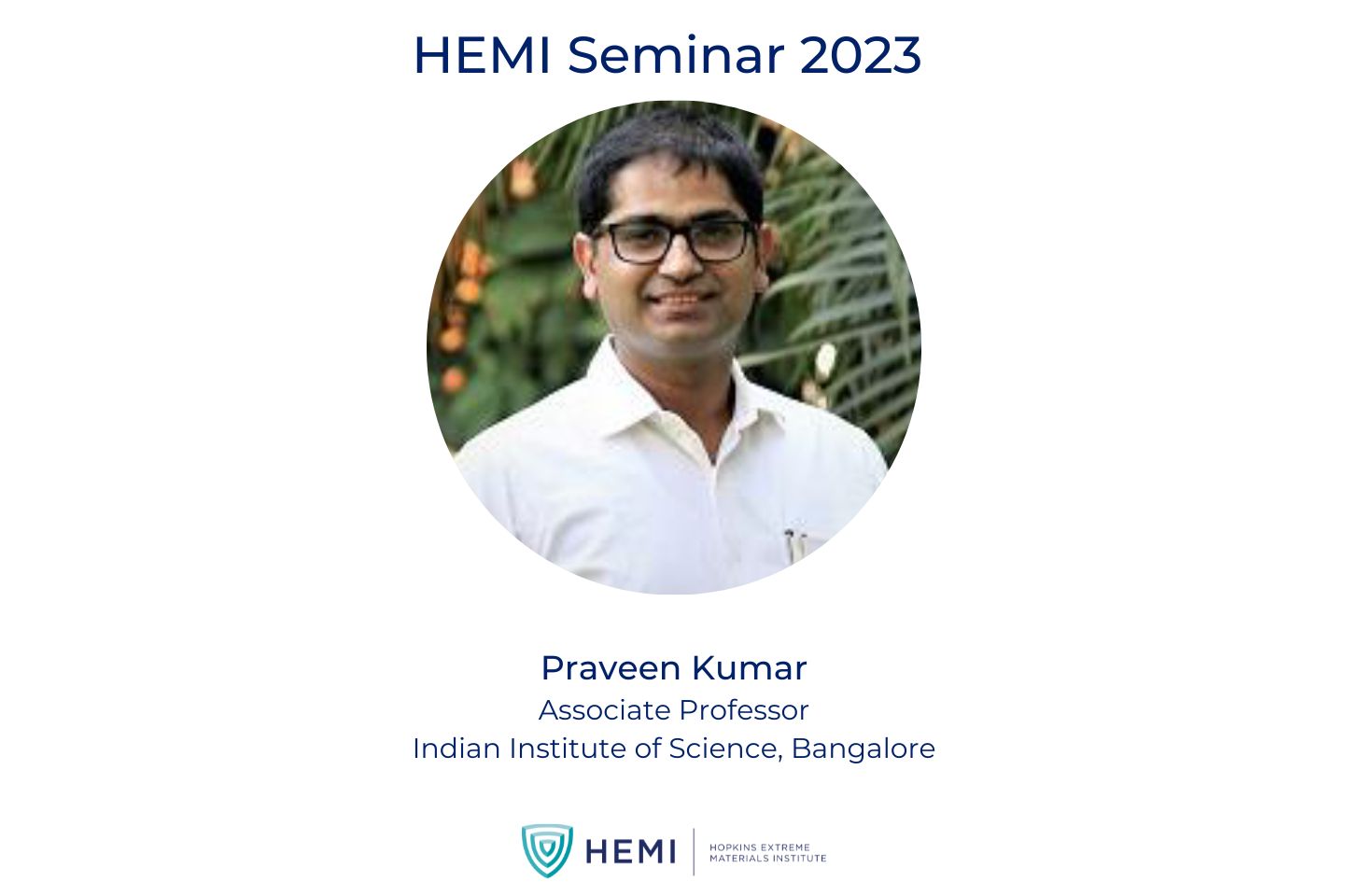June 20, 2023 @ 2:00 pm - 3:00 pm
Event Navigation

Location: Malone 137
Title: Bending Creep of Materials: Rediscovering an Old Alternate Method for Mechanical Testing
Abstract: The first systematic study on bending creep was performed in 1934. Since then, the method has been a popular alternative method for estimating the creep response of materials, especially ceramics and other brittle materials. However, conventionally, only the “averaged out” creep response has been determined, thereby leaving out a plethora of information available at the local level due to the graded stress and strain fields in a beam. We realized that measuring the local strain field using digital image correlation, in conjunction with simple analytical relationships, can extract multiple stress-strain-strain rate triplets, which can be used to obtain multiple creep curves from a single creep test on a cantilever. Subsequently, we developed a scheme to determine the creep stress exponent and establish the relevant structure-property relationship for materials in high throughput fashion using DIC-augmented-bending test methodology. We also applied the method to understand the transient creep response of materials. Finally, I will also discuss our current efforts to further reduce test specimen volume by testing composite and small-sized samples and extending the technique to obtain strain rate sensitivity and other mechanical behaviors of materials in high throughput fashion.
Biography: Praveen Kumar received his Bachelor of Technology degree in Mechanical Engineering from the Indian Institute of Technology, Kanpur, in 2003. Subsequently, he received M.S. and Ph.D. degrees in Mechanical Engineering from the University of Southern California, Los Angeles in 2005 and 2007, respectively. He is currently an Associate Professor with the Department of Materials Engineering, Indian Institute of Science, Bangalore. His main research interests are the mechanical behavior of materials, with particular emphasis on studying the effects of electric current, temperature and sample length scale, and constructive usage of electromigration, both in solid and liquid metals.




